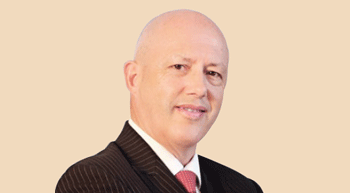
Labour laws are still not conducive to Make in India
What is the investment pumped by Putzmiester so far in India?
Putzmeister has invested more than Rs 100 crore in its facilities in Goa and around the country.
What is your current capacity and capacity utilization?
We can produce 2,000 concrete pumps in our facility and are currently running at 60 per cent of capacity.
To what extent are Putzmeister products manufactured in India localized?
Indian companies have made good progress in the quality of assembly both in terms of infrastructure as well as the quality of work force. However, the quality, price and most particularly the reliability of components subcontractors needs to be drastically improved.
What are the challenges in manufacturing?
Availability of power and water as well as the stability of supply needs to be improved. Transport must become more reliable and professionalized. Raw material suppliers have to take on board best manufacturing practices to improve the quality and reliability of their products and supply chain. GST must become a reality as soon as possible.
To what extent Putzmeister is a manufacturing hub in terms of design, procurement, production and export?
We are the acknowledged world leader and global supplier of concrete machines; we have operations in all major countries world over. As a pioneer of research and development in concrete pumping technology, Putzmeister offers the latest and the most comprehensive range of concreting solutions.
What is the percentage of export?
As mentioned before, 30 per cent of our turnover is generated by our exports to neighbouring countries like, Bangladesh, Nepal and Bhutan, and also to south East Asia, Korea, Japan, South Africa, Brazil and the US. We do export to those countries the complete range of our products manufactured in India.
Tell us about the R&D facility.
We have 15,000 sq m state-of-the-art facility in Goa. Putzmeister has a special concrete application division, which helps our customer to overcome the problems they face early in the project as well as later during the construction phase. Our R&D department is permanently in contact with our customers? engineers in development and application so that we can adapt our equipment in real-time to our customers? needs. Furthermore, our local R&D team is linked to our R&D departments in Europe and the US so that improvements made are shared for the benefit of our local customers.
Tell us about the range of products offered by Putzmeister.
Putzmeister continues to bring in new products into the market, products responding to the latest market requirements (less noise, less fuel consumptions, better ergonomics etc), are user-friendly, environment-friendly and economical. The company has undertaken major landmark projects with its innovative pumping solutions with their new generation machines of both stationary as well as boom pumps. The whole range of eSmart machines includes the BSA 1404 D, BSA 1405 D and BSA 1407 D.
Apart from this new age technology creating great added value to the urban construction projects in India, Putzmeister is also coming up with batching plants in about two to three months. We will make sure that we offer the ?ultimate batching plant? to our clients. Hence, all details are still a well-kept secret, until the promising newcomer is unveiled.
Tell us about your dealer network.
Putzmeister operates on a pan-India basis with its head office and manufacturing located in Verna, Goa. We have seven regional offices, numerous warehouses, service points and a wide dealership network all over India and the neighbouring countries.
How do you look at the demand-supply scenario for your products?
In the last three years, the Indian market for construction industry has shrunk by as much as 30 per cent in comparison to 2011. I do believe that it will take 2-3 years to come back to the 2011 figures. The expectations based on the Central Government proposals are very high, particularly in infrastructure and real estate developments.


 +91-22-24193000
+91-22-24193000 Subscriber@ASAPPinfoGlobal.com
Subscriber@ASAPPinfoGlobal.com